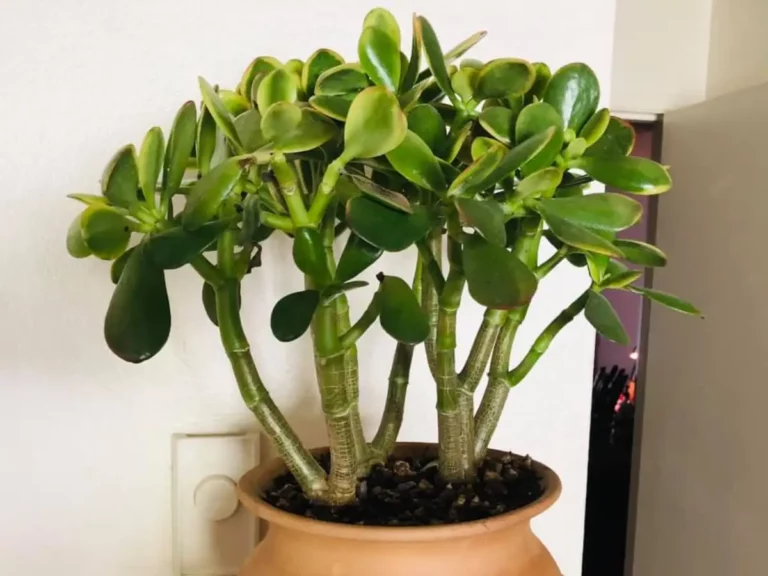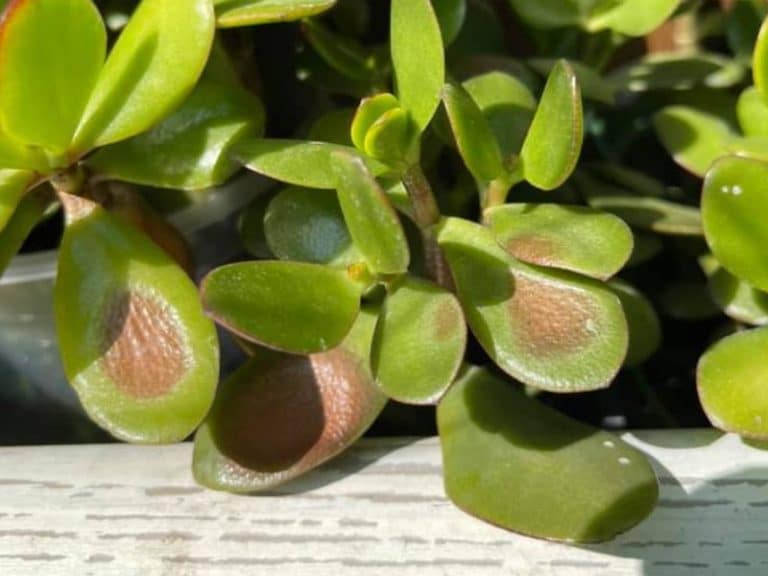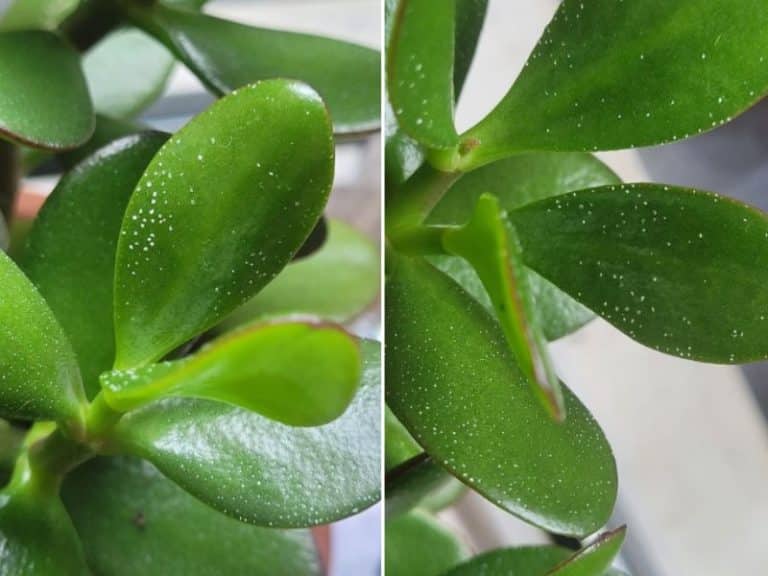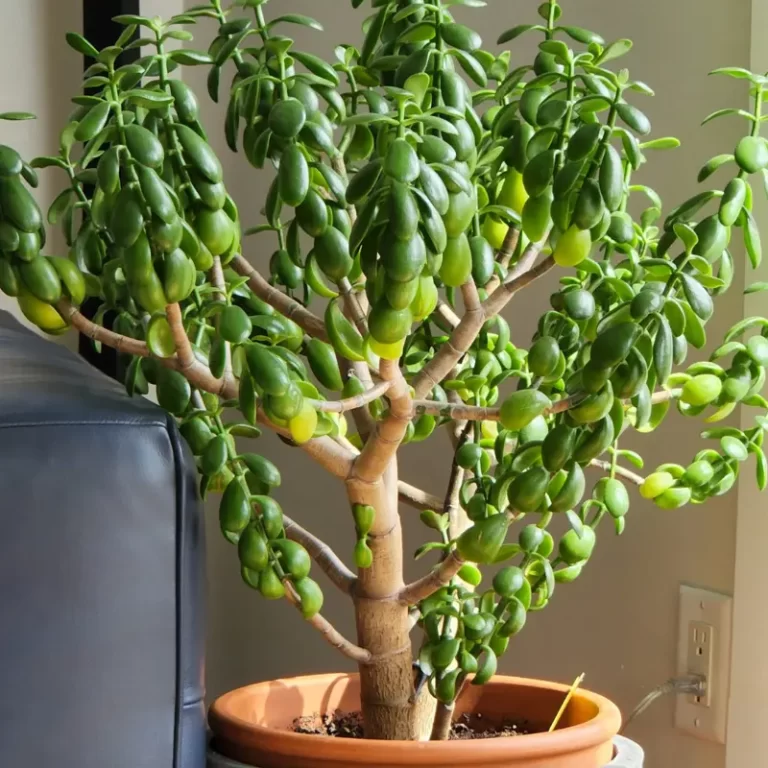Jade Plant Drooping Leaves and Branches – Causes + Fixes
With proper care for your jade plant (Crassula ovata) you’ll hardly see it with drooping leaves and sagging branches. Whether you’re growing the plant indoors or outdoors, you’ll manage to keep it happy with little fertilizer, temperature, proper lighting, and watering. But why do jade plants droop, and how can you fix the problem?
The main causes of drooping leaves and branches in a healthy jade plant are underwatering, overfertilizing, and repotting. Other problems like as poorly draining soil, low light, extreme temperature, pests, and diseases can also lead to wilting and drooping.
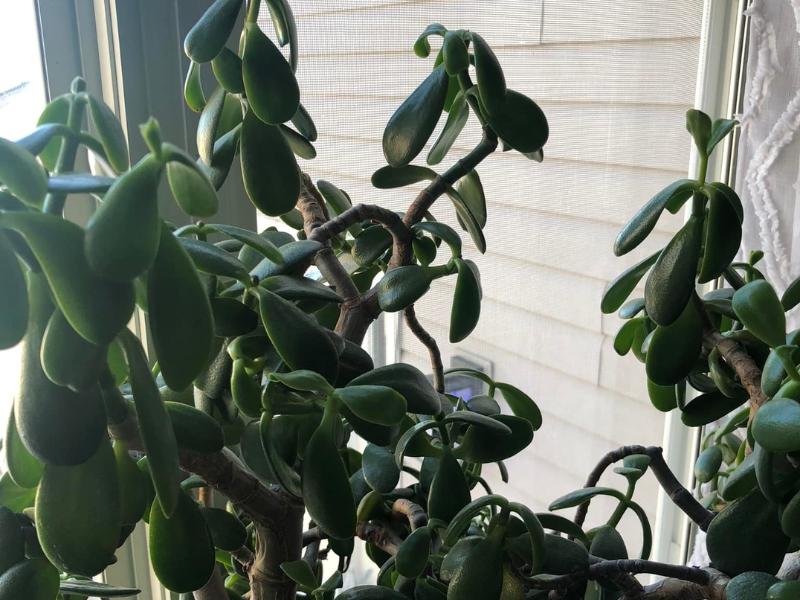
Close monitoring and proper maintenance will solve and prevent these problems.
Why is my jade plant drooping?
I rarely find my jade plants drooping, but when I do, it mostly points to neglect and improper care. In most cases, it is easy to identify the cause when looking at additional plant signs.
Here are the reasons for a drooping jade plant:
Overwatering and underwatering
As a succulent, the Jade plant adapts to arid temperatures. This adaptation is why overwatering the plant causes more adverse effects than underwatering.
Overwatering the plant causes the stems to become soggy and weak. They later break because they cannot support the weight of the plant. Overwatering also causes root rot and causes poor anaerobic conditions, killing the plant.
Underwatering leads to leaf wilting and wrinkling in jade plants. The plant’s leaves lose turgidity and start to shrivel and droop due to lack of water that helps with support.
As the plant uses the water, the leaves begin to wilt and droop, a sign that the plant needs more water. Avoid reaching this wilt and droop point, as it could stress the plant.
It’s growing in poorly draining soils
Poor draining soils could also cause root rot. The roots may become soggy and rot when the water in the soil takes too long to drain. As highlighted, dead roots reduce water intake leading to droopy leaves and stems.
The potting mixture for the jade plant is chosen selectively to prevent water logging.
It is growing in low light
Without enough energy from sunlight, plants do not convert nutrients into food. Hence the jade plant becomes weak. The stems weaken and break under the weight of the heavy leaves, possibly killing the plant.
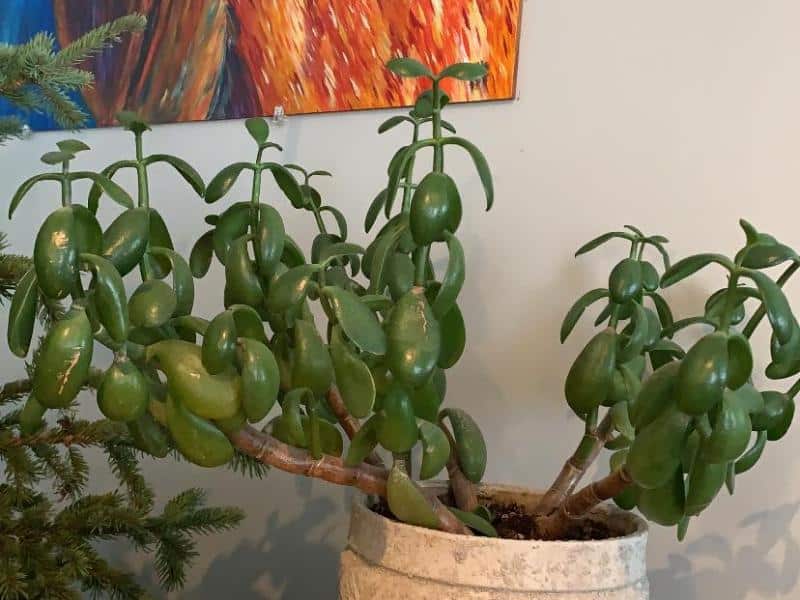
Jade plants do not require scorching sun either, as it causes the leaves to lose too much water, turn color, and droop.
It is growing in extreme temperature
Extreme temperatures in jade plants reduce the photosynthesis rate, leading to drooping. The jade plant can endure sweltering heat and temperatures as low as 32°F.
In chilly weather, water freezes inside the jade plant’s cells and later expands, destroying it from the inside and causing it to droop. High temperatures exceeding 86°F cause the jade plant to lose more water than it takes in, making the plant droop.
It is overfertilized
Jade plants do not need many minerals to thrive. They are adapted to low-nutrient soils.
Proper fertilizers add more essential minerals that boost the soil quality. Apply fertilizers occasionally and in minimum amounts. High doses of fertilizer shock the plant and constrict it from proper growth.
Over-fertilizing may also cause a sudden expansion of the jade plants with inadequate root resources to supply water and nutrients to the rest of the plant, causing it to droop.
It suffers from repotting shock
A repotted jade plant’s new roots must adapt to a new environment once they sprout. The plant might droop while recovering from the shock of a new setting.
A jade plant can grow comfortably whether its roots are constricted to a small pot or in bigger containers. Watering and applying fertilizers immediately after repotting are the two main factors likely to destroy repotted jade plants.
The plant needs time to adapt to the new environment before watering and applying fertilizer.
Pests and diseases
When pests invade your plant, drooping is one of the first signs your plant will give. Pests such as scales, mealybugs, and spider mites invade your jade plant, feed off its sap, and weaken the leaves and stem.
Consequently, the leaves and stems will droop. The plant might die unless you take immediate action using pesticides.
Using chemically harsh products on your jade plant
While you’d want your jade plant looking plump, using harsh products can do more harm than good. Products such as leaf shining products are good for aesthetics. However, they are terrible for the overall health of the plant.
Prolonged use can block the leaf’s stomata or form layers on the leaves, preventing proper light absorption.
Can a limp, sagging jade plant recover?
A limp, sagging jade plant can recover with proper restorative and preventative maintenance.
The jade plant is a low-maintenance plant conditioned to harsh conditions. Replicating its native conditions will bring it back to life. The timing, though, might be different.
The severity of damage will determine how long it takes a limp, sagging jade plant to recover.
How to fix a drooping jade plant
The best way to fix a drooping jade plant is to provide it with conditions almost similar to its native state.
Water the jade plant correctly
As a succulent that stores water in the leaves, a jade plant doesn’t do well in soggy soil.
Recover your overwatered jade plant by taking the plant by the roots and cutting off the rotten roots. Transfer the removed jade plant to fresh soil and let it dry for a week. Water it once every three weeks. Allow the top 1-2 inches of topsoil to dry out before the next watering.
Restore an underwatered jade plant in summer by watering the soil until it soaks. Soaking the soil ensures the roots get enough water to distribute to the rest of the plant.
However, water the plant about 2-3 times during winter.
Replace poor draining soils with well-draining soils
Many rookie jade plant owners or growers plant it using water-retaining peat soil. Soon the plant succumbs to root rot.
If the soil is retaining water, replacing it with cactus potting helps water drain faster and prevent further rotting.
Expose the jade plant to sunlight
Each day, dropping indoor jade plants should be taken out for four to six hours of bright light. Move your drooping jade plant to a south-facing window for complete exposure to sunlight.
Sunlight revives and strengthens the jade plant’s leaves and stems. Additionally, the plant grows toward the light.
Prune your jade plant
Pruning a jade plant to shape it is easy. While it is not necessary for health, it does wonders for aesthetics, especially after drooping.
Prune a droopy jade plant using a sharp sterilized blade, and cut just below the tip where the stem meets its main branch. Healthy growth will then emerge from below the cut.
You can prune the jade plant in stages to monitor progress and signs of infection. Jade plants are vulnerable during and after pruning.
Add structural support
Sometimes your jade plant droops because it is too heavy for the stems to support it. Use a stick or a stake to help the plant carry its weight. Anchor stakes in the soil and tie them to the weak stems. The upright stem should get strong enough to support the plant.
It would also be the right time to trim some of the heavier sections off the topmost part of the jade plant.
Maintain temperature at 65°F to 75°F
Jade plants thrive in daytime temperatures ranging from 65°F to 75°F and 50°F to 55°F. If they are exposed to enough sunlight, they will do fine in temperatures higher than this. Move the plant to a location with these conditions. Also, you can use grow lights mimicking these temperature ranges.
Proper fertilization
For a droopy jade plant to revive, fertilize your jade plant about once every six months, using a balanced, water-soluble fertilizer. First, water your plant regularly, then add the liquid fertilizer. Do not fertilize your jade plant when the soil is dry because it will damage the roots.
References
- Susan Mahr, University of Wisconsin-Madison: Jade plant care
- Clemson Cooperative Extension: Jade plant


